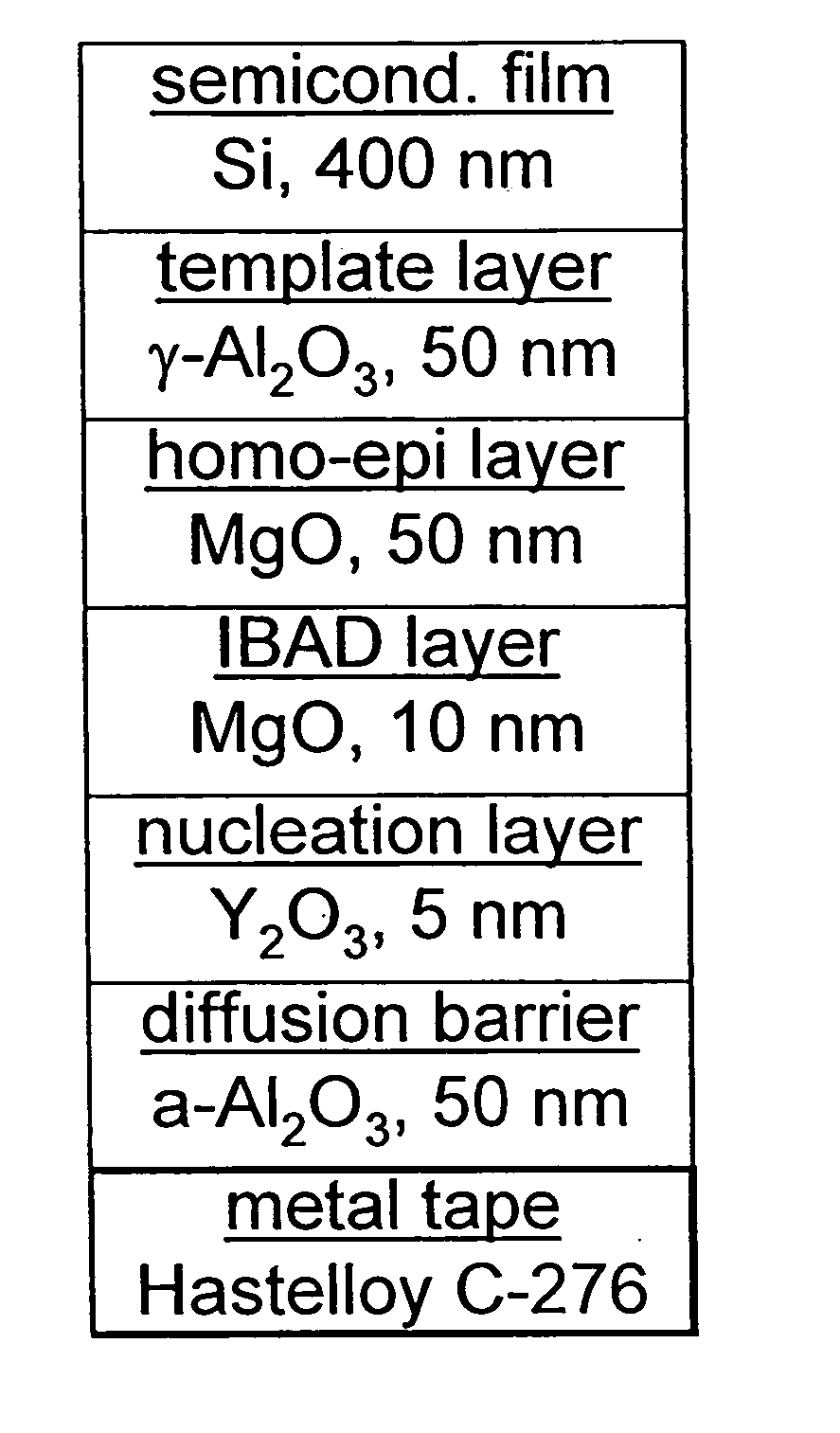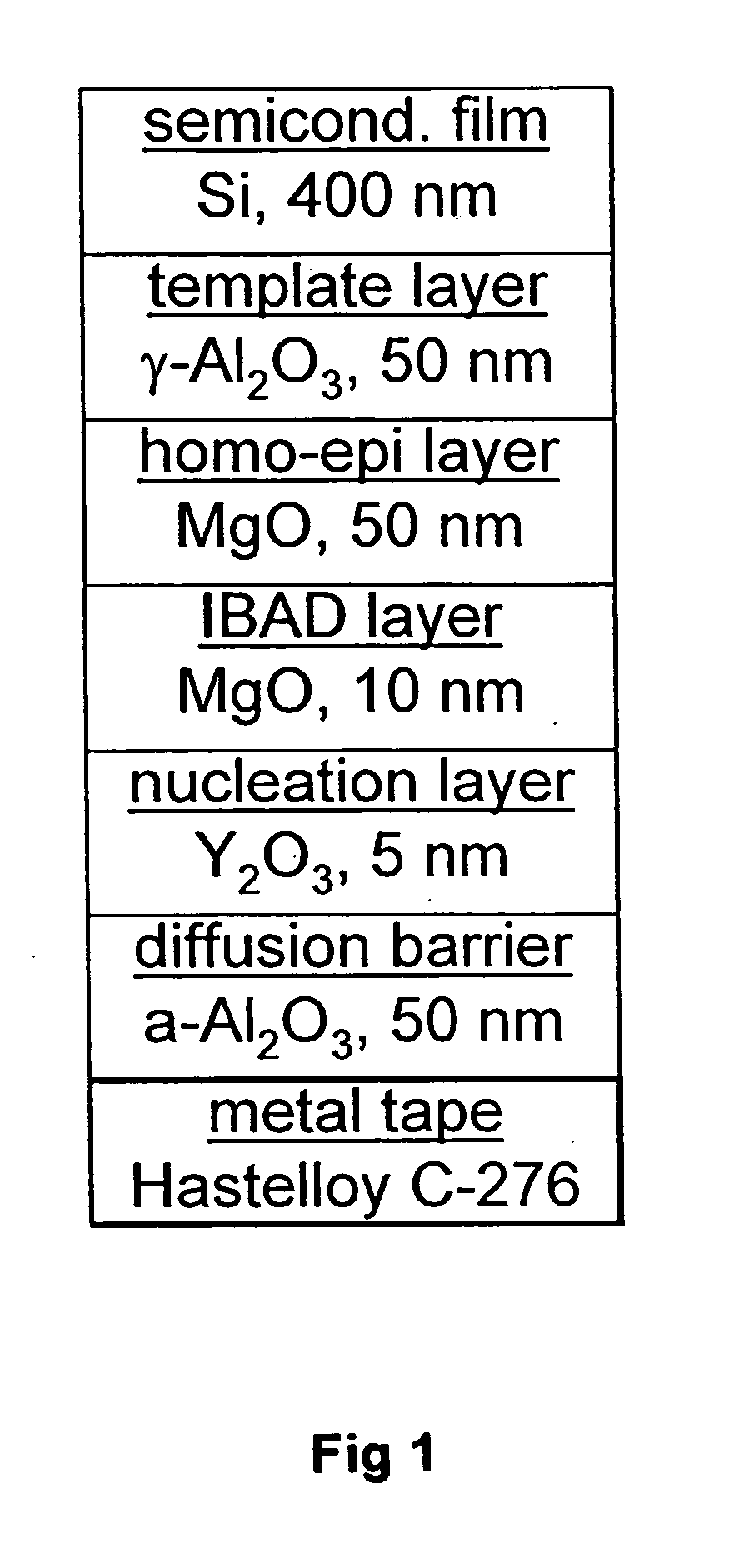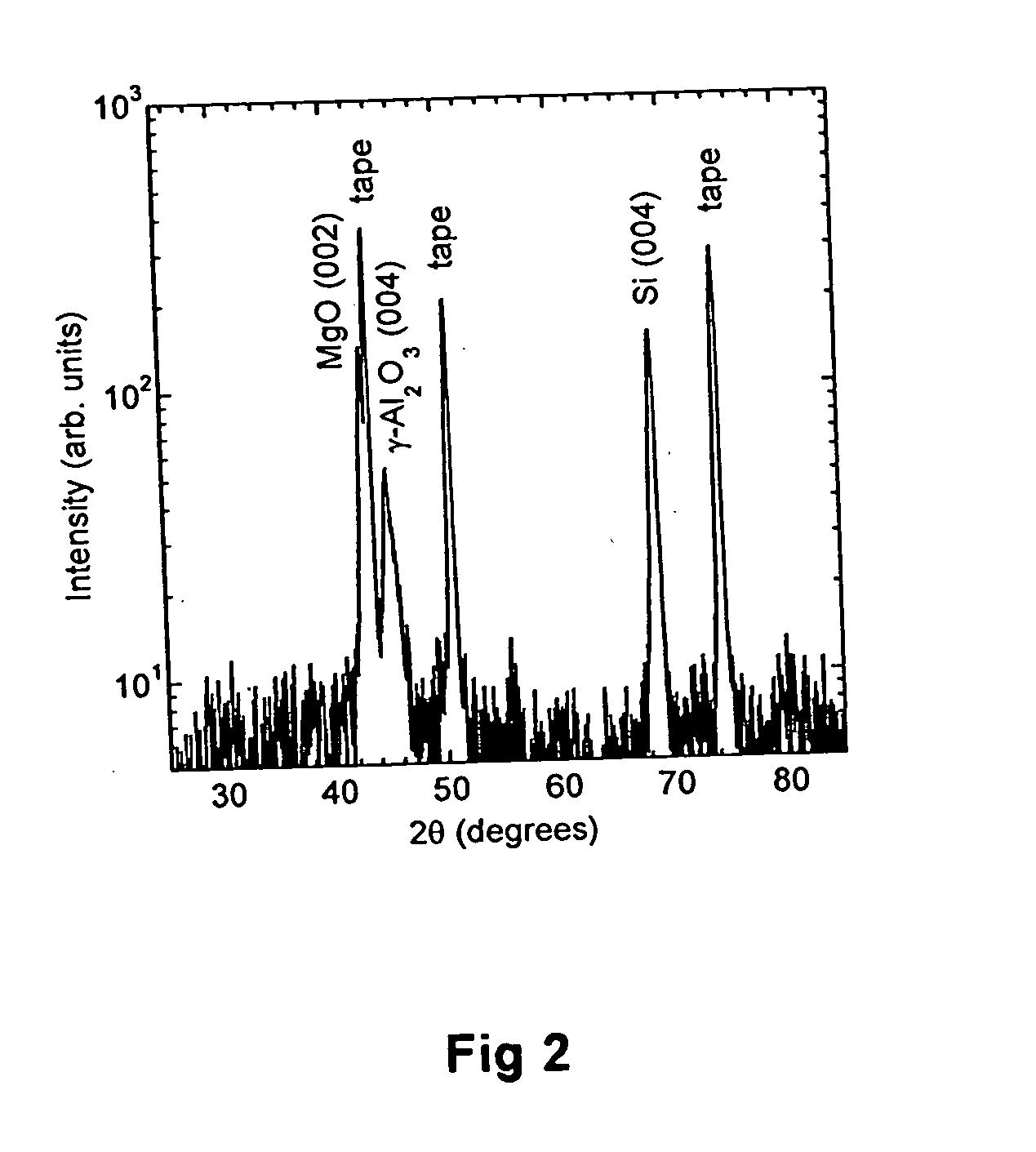Near single-crystalline, high-carrier-mobility silicon thin film on a polycrystalline/amorphous substrate
a polycrystalline/amorphous substrate, high carrier mobility technology, applied in the field of materials, can solve the problems inability to find suitable epitaxial template for well-oriented film growth, and inability to meet the requirements of a single crystal template, etc., to achieve the effect of low chemical reactivity
- Summary
- Abstract
- Description
- Claims
- Application Information
AI Technical Summary
Benefits of technology
Problems solved by technology
Method used
Image
Examples
example 1
[0033] A structure in accordance with FIG. 1 was prepared as follows. A 1-cm-wide and 100-μm-thick nickel metal tape (Hastelloy C-276) was rolled and electrochemically polished to a root mean square (rms) surface roughness of about 1 nm, measured on a 5×5 μm2 scale.
[0034] This flexible polycrystalline metal substrate was then cleaned by an argon ion beam etch (90 mA, 750 V, 22×6-cm rf Kaufmann source). Next, a 50 nanometer (nm) thick amorphous layer of aluminum oxide (Al2O3) was deposited at room temperature by e-beam evaporation onto the nickel metal tape. Then, a 7 nm thick layer of yttrium oxide (Y2O3) was deposited at room temperature at a rate of about 0.15 nm per second (nm / s) by e-beam evaporation. Next, a 10 nm thick layer of magnesium oxide (MgO) was deposited using ion beam assisted deposition at room temperature (argon ion assist beam at 45° to substrate normal, 90 mA, 750 V) with a deposition rate of about 0.4 nm / s. A homo-epitaxial layer of MgO (from about 50 to 100 nm...
example 2
[0036] A biaxially-oriented silicon (Si) film was then grown on the γ-Al2O3 buffer / template layer at a temperature of about 780° C. in an ambient chamber pressure of 1×10−6 Torr. The doping concentration in the p-Si film was between 1016 and 1017 / cm3 and could be varied depending on the added amount of boron in the evaporation source of nominally pure Si. The RHEED patterns indicated that the Si grew with (001) orientation perpendicular to the substrate with in-plane lattice constant of 0.54 nm.
[0037] The crystallographic orientation, epitaxial relationship, and microstructure of the multilayered samples were further analyzed by x-ray diffraction (XRD) and transmission electron microscopy (TEM). An XRD θ-2θ scan (shown in FIG. 2) shows all biaxially-oriented layers (MgO, γ-Al2O3, and Si) grew with the (001) orientation perpendicular to the substrate surface. The rocking curve on the Si (004) peak yielded full width at half-maximum (FWHM) value Δω of about 0.8° (FIG. 3), whereas the...
PUM
| Property | Measurement | Unit |
|---|---|---|
| temperatures | aaaaa | aaaaa |
| temperature | aaaaa | aaaaa |
| partial pressures | aaaaa | aaaaa |
Abstract
Description
Claims
Application Information
 Login to View More
Login to View More - R&D
- Intellectual Property
- Life Sciences
- Materials
- Tech Scout
- Unparalleled Data Quality
- Higher Quality Content
- 60% Fewer Hallucinations
Browse by: Latest US Patents, China's latest patents, Technical Efficacy Thesaurus, Application Domain, Technology Topic, Popular Technical Reports.
© 2025 PatSnap. All rights reserved.Legal|Privacy policy|Modern Slavery Act Transparency Statement|Sitemap|About US| Contact US: help@patsnap.com



